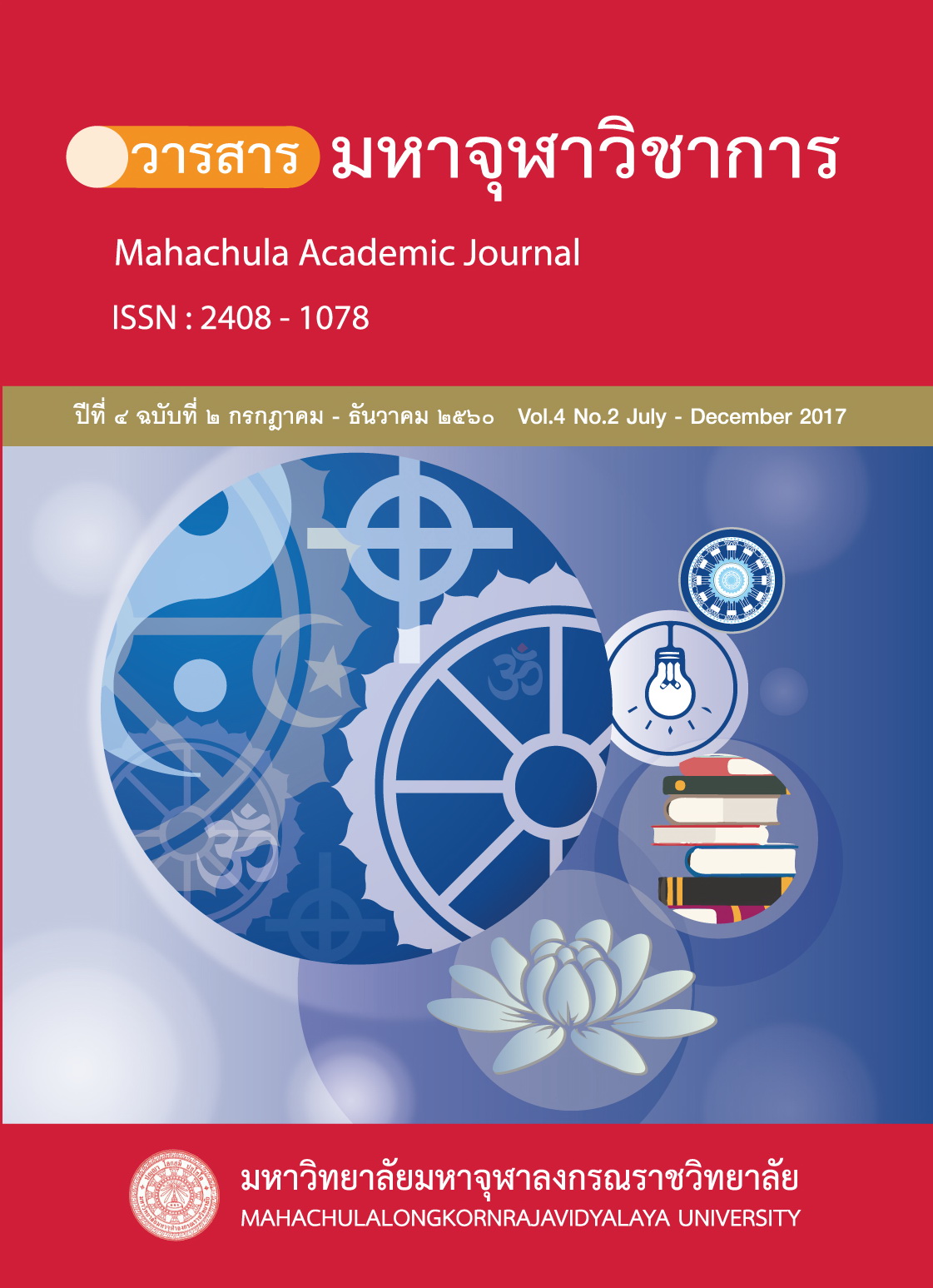Kammaṭṭhāna in Buddhism Lessons from Mahā- satipaṭṭhāna Sutta and Popularity in Thai Society
Main Article Content
Abstract
Kammaṭṭhāna in Buddhism is mental practice methods to concentrate our mind and a concentrated mind consisted of quality, healthy and capacity building a person performance highly, successfully and effectively. There are two kinds of Kammaṭṭhāna in Buddhism, Vipassanā and Samatha Karmmasthana, both are the same purpose that is to concentrate a mind and enlighten the Niravara.
Sati-paṭṭhāna is mindfulness of the body, mindfulness of feelings or sensations, mindfulness of mind or consciousness and mindfulness of Dhammās which is highly popular practice in the past and now. Trisikkha is the main practice of Kammaṭṭhāna. These are important principles which the Lord Buddha clearly suggested us to adapt these toward the practical part in Mahā- satipaṭṭhāna Sutta and other subordinate Sutta such as Anapanasati Sutta. These practice have been propagating in Buddhist countries like Sri Lanka, Myanmar and Thailand from Buddha era and now.
Each institute has different ways of Satipatthana practice. How to practice Satipatthana are as follows; Kāyānupassanā determines trainee walking, standing and sitting as main practice, also always be conscious one mind calm and still. While walking, standing and sitting, trainee clearly aware when they have pains and aches as be called Vedanānupassanā. As to the motion “sleeping”, trainee should practice before going to bed. Clearly awareness of mind when it is distracted which this practice leads to Cittānupassanā. Meanwhile concentrated mind happens then trainee investigate defilements that are hindrances (Nīvaraṇāni) and investigate Āyatana (Sense base), Bojjhaṅgā (Seven Factors of Enlightenment), Ariyasaccāni (Four noble truths) as be called Dhammānupassanā.
The purpose of these various practice is to determine the nature of life, Khandhas (five aggregates [Nāmarūpa]), that “All things are subjected to the rule of arising, existing and falling. All things spring from a cause.” After have enlightened of the nature of life, a one mind will be able to loosen the attachments. Kammaṭṭhāna is obviously high benefit and results of merit. All experts accepted that a concentrated mind is quality, healthy and capacity. Therefore, these have become popular practice in the world.
Article Details
References
พระพุทธโฆสเถระ ผู้รจนา. คัมภีร์วิสุทธิมรรค แปลและเรียบเรียงโดย สมเด็จพระพุฒาจารย์ (อาจ อาสภมหาเถร). พิมพ์ครั้งที่ ๙. กรุงเทพมหานคร: ธนาเพรส, ๒๕๕๓.
พระพรหมคุณาภรณ์ (ป.อ. ปยุตฺโต). พุทธธรรม ฉบับปรับขยาย พิมพ์ครั้งที่ ๓๙. กรุงเทพมหานคร: โรงพิมพ์มหาจุฬาลงกรณราชวิทยาลัย, ๒๕๕๗.
พระธรรมธีรราชมหามุนี (โชดก ญาณสิทฺธิ). หลักปฏิบัติสมถะ-วิปัสสนากรรมฐาน. กรุงเทพมหานคร: โรงพิมพ์มหาจุฬาลงกรณราชวิทยาลัย, ๒๕๓๑.
พระครูปลัดสุวัฒนพรหมคุณ (ณรงค์ จิตฺตโสภโณ) บรรณาธิการ. วิปัสสนากรรมฐานในพระพุทธศาสนา. กรุงเทพมหานคร: โรงพิมพ์มหาจุฬาลงกรณราชวิทยาลัย, ๒๕๔๐.
พระภัททันตะ อาสภะ มหาเถระ อัคคมหากัมมัฏฐานาจริยะ. วิปัสสนาธุระ. กรุงเทพมหานคร: C100 Design Co., LTD., ๒๕๓๖.
มหาวิทยาลัยมหาจุฬาลงกรณราชวิทยาลัย. พระไตรปิฎกภาษาไทยฉบับมหาจุฬาลงกรณราชวิทยาลัย. กรุงเทพมหานคร: โรงพิมพ์มหาจุฬาลงกรณราชวิทยาลัย, ๒๕๓๙.


